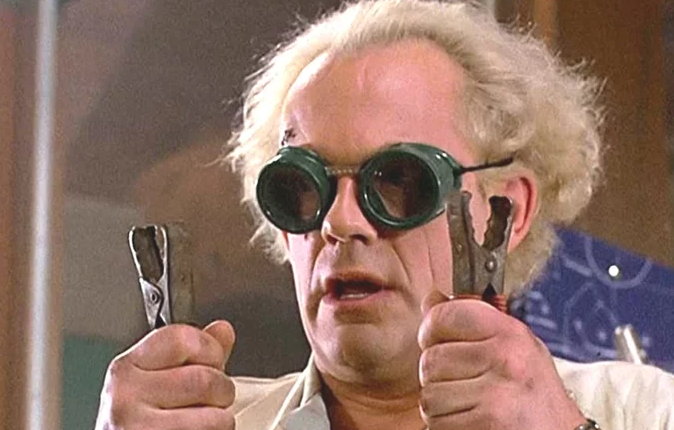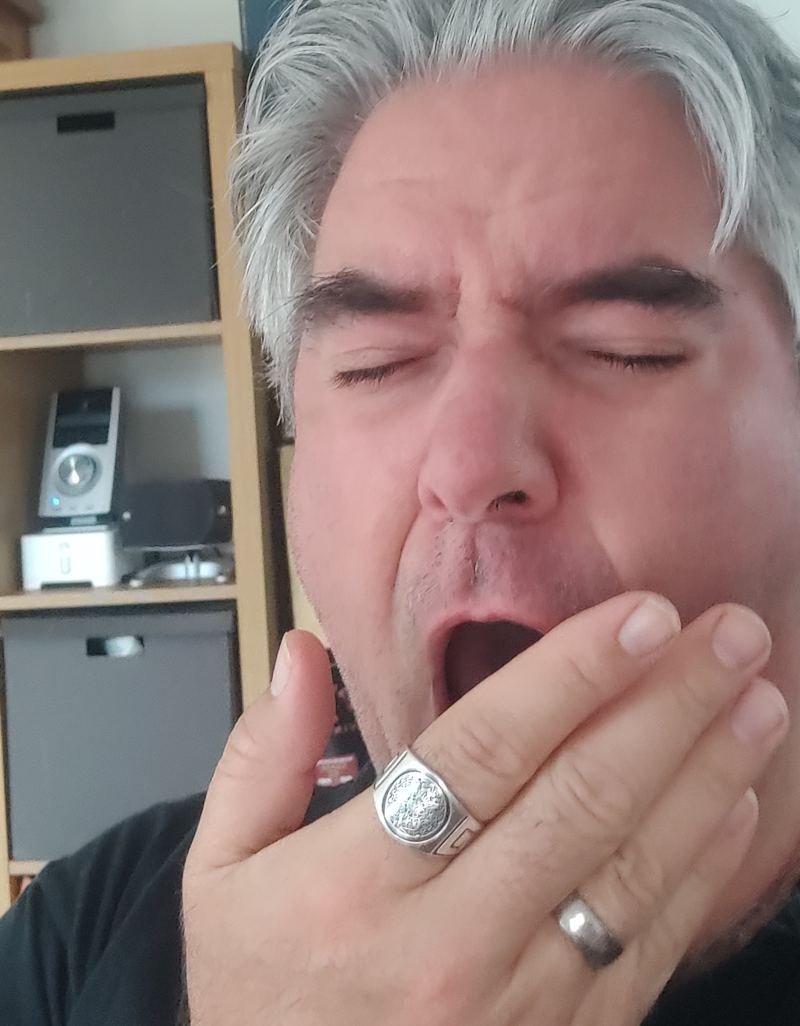 As someone who spends a fair bit of time around booze at the moment, there’s a teeny weeny little issue that’s been bothering me for a while, and like any niggling issue it has grown over time to be a source of disproportionate frustration.
As someone who spends a fair bit of time around booze at the moment, there’s a teeny weeny little issue that’s been bothering me for a while, and like any niggling issue it has grown over time to be a source of disproportionate frustration.
The problem is when someone’s describing a – typically Herculean – whisky drinking episode to me: “Me and a mate…” (this typically comes up among people with a poor grasp of grammar) “had this stuff on the weekend… it was pretty strong… 100 percent proof!”.
Stop. Stop right there.
This absolutely drives me crazy, so as the old saying goes – Education before genocide.
There are two main systems of describing the alcoholic strength of a drink.
% ABV
The more commonly used system is Alcohol By Volume, or ABV. This is the one you see written as a percentage. The percentage number refers to how much of the volume of liquid you’re looking at is alcohol. If you were to drink 100mL of whisky at 46%abv, you would be consuming 46mL of alcohol – specifically, ethanol. Although it’s also worth mentioning that you shouldn’t drink 100mL of whisky in one go, either.
What makes up the other 54% of the liquid varies a bit from drink to drink – generally it’ll mainly be water, however there will also be aromatic and flavour compounds, which give the whisky its distinctive character and mouth-feel.
A handy thing to remember is that 60mL of 40%abv bourbon (a “double”, depending on where you are) is still 25mL of pure alcohol. Many visitors to places like Hong Kong come badly unstuck by drinking pitchers of whisky mixed with water 60/40 or 75/25 by the tumbler full. You don’t really taste the booze, but it’s in there.
In the case of whisky, in order to be sold as whisky it’s got to be at least 40%abv, however depending on a range of factors can be much higher: we had one at a Whisky Squad session once which was 67%abv.
Typically “standard” distillery bottlings of whisky are sold at either 40%abv or 43%abv. One traditional departure from this is Talisker 10yo which is bottled at 45.8%abv – when the distillery manager there was asked by Diageo what strength they should bottle at, he said “80 proof!”.
Proof
The other prevalent measure – typically used in the USA, it seems – is the Proof system. A spirit is graded as being a certain value “proof”. For example, many bourbons are sold at 80 proof, or people might talk of rums that are 100 proof. The key thing here is that it’s 100 proof, NOT 100 percent proof. If the spirit was 100 percent alcohol, for starters it wouldn’t be brown. It’d be a clear, volatile liquid that you could clean hospitals with.
The proof system originated when British sailors were paid by a combination of money and a rum ration, and it was commonplace for the rum to be watered down in order to get more out of a barrel. It was found that there was a certain strength of rum at which, if you immersed a grain of gunpowder in it, the gunpowder would still ignite. The strength was 57.15%abv, which was described as “100 proof”. If the gunpowder didn’t light then the sailors could see that their rations were light. You can probably see the reasoning for the American predilection for this scale – you get to do science AND blow shit up!
Only the US system is (predictably) different to this proof system – the US proof measure (as seen on bourbon bottles, for instance) is simply a doubling of the %abv strength… so, 40%abv = 80 proof, and so on.
In the UK from 1740ish onwards proof was more accurately measured using a Clark’s Hydrometer rather than setting fire to things all the time, and then in 1818 the Sikes Hydrometer superseded that, and remained in use until the 1980s.
While the gunpowder system was still in place, the way to get 80 proof spirits would have been to ensure the spirit was at 100 proof, and then dilute by volume. However once the hydrometer method had been established it would have been easier to grade over-proof spirits (eg 140 proof, etc.).
 Degrees Gay-Lussac
Degrees Gay-Lussac
Yes, I’m serious.
A system for measuring the alcoholic strength of a liquid was developed by the French physicist & hydrogen balloonist Joseph Louis Gay-Lussac in 1824, and his scale was measured in °GL, or degrees Gay-Lussac. As it happens, this scale measured alcohol by volume, so °GL is the same as %abv. That’s easy to remember.
The main reason I’ve included this is because it came up in a pub quiz once (“What is measured by degrees Gay-Lussac?”), and when we got it wrong I was subject to quite some lampoonery by my team members, given my list of hobbies in related fields. In my own defence, Gay Lussac was more famously associated with laws involving the behaviour of gases – and that’s what I was maniacally trying to scramble to recall, rather than thinking about what I normally am and in this case SHOULD have been – WHISKY!
And I can’t deny there was a certain amount of sniggering, but when do you find a name that contains both the words “gay” and “sac”? Puerile, but we *were* trying to remember stuff we’d been taught in Year 8. Erroneously.
One reason we can be sure that Proof isn’t related to a percentage value is that the maximum strength a bourbon can be casked at is 140 proof, so it can’t be a percentage. The only place 140% of anything can exist is in the minds of motivational speakers, and companies that offer credit cards to people with bad credit ratings.
You could argue that if you referred to 100 Proof simply as Proof, then 140% Proof was the same as 1.4 x 57.15. But that looks like a percent of a percent to me, and I can’t embrace it. And, as already mentioned, the US application of Proof is simply to double the ABV.
Based on what I’ve read, the US don’t even use the Proof system any more – favouring the more scientific ABV measurement, and only include it for reasons of not confusing the elderly… same reason you still see prices in Francs printed on French price stickers sometimes, despite the fact they’ve not used the Franc as a unit of currency since 2002.
My cynical suspicion, therefore, is that the Proof system in the modern world is championed mainly by idiots who like using large numbers to try to sound impressive about having drunk a lot. Or maybe they’re fans of blowing stuff up.
What about Czech beers marked as 10° or 12° then? Is that °GL?
That’s an excellent question, brain.
It’s not that, no. Those degrees are to do with the Original Gravity of the wort used in the brewing process, and the degrees there refer to a scale known as Plato. It’s a measure of the density of the liquid drained off after the malt has been boiled, and contains a mixture of sugars and other compounds. The higher the density of this, the more the yeast have to eat, and (generally) the higher the alcohol yield of the yeast. So 12°P is definitely not the same as 12%abv.
So what about “Standard Drinks” and “Units of alcohol”?
 Oh wow, the plot thickens. In Australia and the UK there are public health campaigns centred around how much alcohol a person can “safely” drink – at one point the UK guidance was that men drink no more than 21 units a week, however there was also a guideline that the daily maximums should be 3-4 units a day for men, and 2-3 for women (given average height-weight ratios).
Oh wow, the plot thickens. In Australia and the UK there are public health campaigns centred around how much alcohol a person can “safely” drink – at one point the UK guidance was that men drink no more than 21 units a week, however there was also a guideline that the daily maximums should be 3-4 units a day for men, and 2-3 for women (given average height-weight ratios).
An Australian Standard Drink is defined as “a drink containing 10 grams of pure alcohol”, whereas a UK unit of alcohol is 10mL of alcohol – the chief difference being that 10g is 12.7mL, so 4 Standard Drinks is just over 5 units. The idea is that one unit/drink is the amount of alcohol that the average healthy adult liver can metabolise in one hour. Clearly they’re using different researchers, or the Australian liver is 27% more efficient.
(It turns out via Wikipedia that it’s even more complex than that – lots of countries have different definitions of “standard drinks” – from 7.62mL of alcohol in Austria to 25mL in Japan!)
Revisions keep being made to various national guidelines, but as far as I can tell in the UK the current recommendations are to stick to 2 or fewer units a day and have at least a day in between where you don’t drink any alcohol in order to minimise risk of health complications or effects.
What’s more useful than guidelines is the MyDrinkaware Diary – a tool where you can enter your own alcohol intake and calculate how many units you’ve had, how many calories that means, and get a better feel for what’s really going on. Provided you haven’t had so much booze you can’t remember how much booze you’ve had. Which probably isn’t a good sign to start with. But something which isn’t always highlighted is the calorie value of alcohol, and according to the UK information, “Research from the Department of Health reveals that a man drinking five pints a week consumes the same number of calories as someone getting through 221 doughnuts a year“. That’s a shitload of donuts.
What’s your point, man?
I don’t know – as usual, I didn’t really have one when I started typing. One thing that I’ve definitely started to embrace recently however is drinking half-pints of beer, or 10-20mL measures of whisky. Given that I’ve maintained for years now that my reason for drinking beer & whisky is primarily to enjoy the range of tastes & flavours rather than for the effect of the alcohol, it seems to make sense that you can get the taste of a drink in a smaller measure. It’s got to be worth a try, eh?
According to that calculator thing, over the weekend my (fairly modest, I thought) alcohol intake had the same amount of calories as 7.1 burgers (although I guess we went to a beer festival on Saturday, which is atypical).
Shit.




